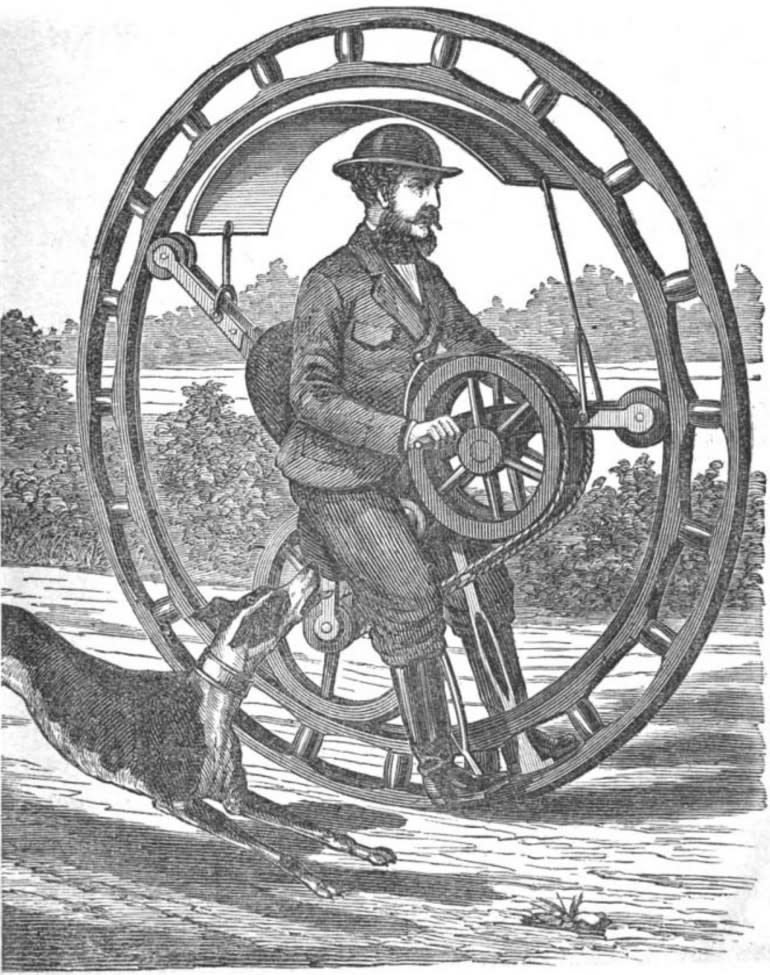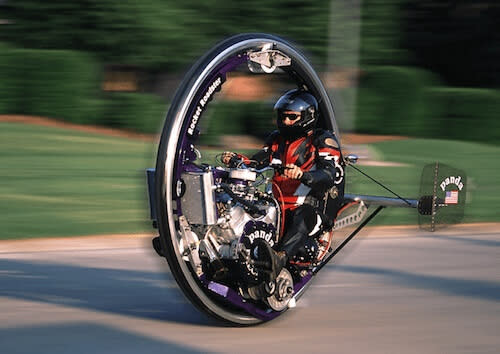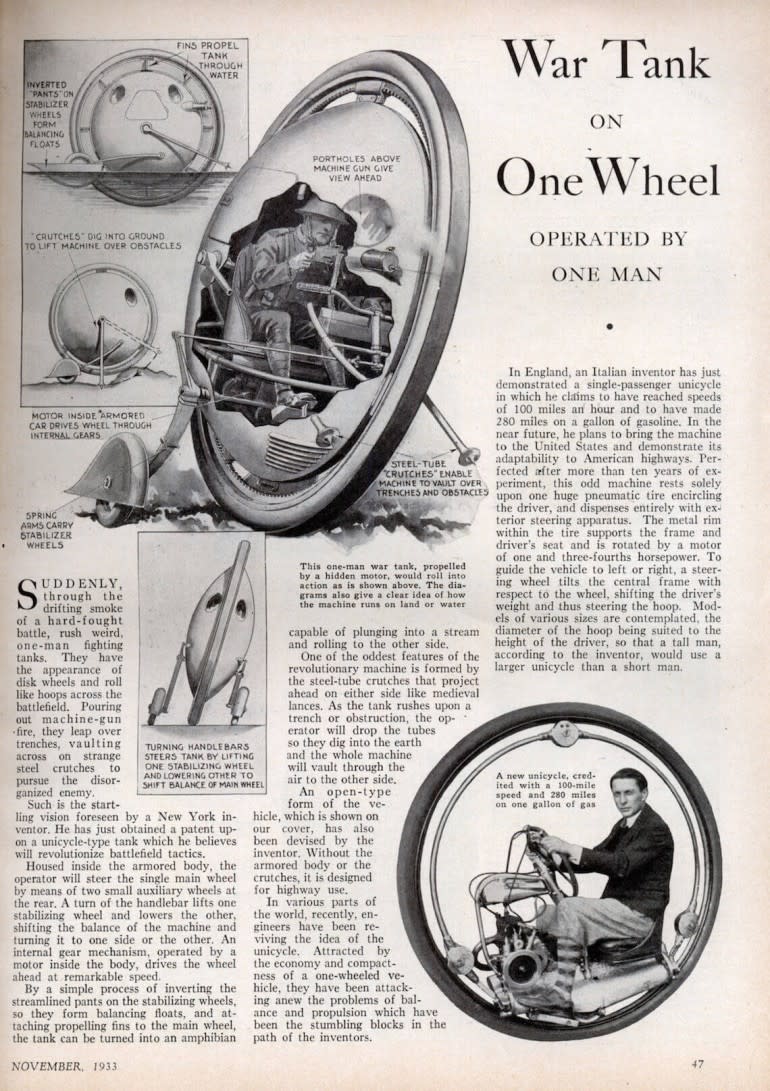TBT - The Monowheel - Film Vault
TBT - The Monowheel - Film Vault
Dating as far back as the late 1800s inventors had designed, built and operated various forms of the monowheel. This one showed up in my Facebook feed this week and got me interested in learning more about these unusual machines.
The 1935 Monowheel
Watching this film got me to wondering how these things work: How do they steer? What keeps the rider from spinning around inside the wheel during acceleration or deceleration? Are they safe? And why the hell aren't we all riding around in monowheels?
Steering
Since speed and direction are controlled by one wheel, in which the rider sits in the middle of, steering these steampunk contraptions is something less than straightforward. Over the years, various designs have employed different methods.
Hemming's Unicycle

Leaning
Leaning is a concept that motorcyclists understand. In the monowheel, however, the rider must lean towards his intended direction of travel to turn, then centralize his or her weight as the wheel turns over and under the pilot. Early pedal powered versions were lean-only machines, aided by some skillful foot dragging to help control. While moving at something slightly faster than walking speed, dragging a foot on the ground will cause the wheel to lean to the opposite side. Dragging the other foot will bring it back upright. Think of it in the same way you would counter steer your motorcycle - minus the foot-dragging part.
Subsequent iterations of monowheels employed mechanical means of initiating lean angle for steering. By use of handlebars or a steering wheel, control inputs swing the occupants of the monowheel side to side along a horizontal axis, causing the wheel to lean into the direction of input. This clip from the 1930s does a good job explaining one approach to how this was achieved in a monowheel dubbed the "Dynoshpere."
The Dynosphere
Further variations of monowheels made use of aerodynamic tail surfaces to help these dodgy machines with stability and control. While this method would be worthless at low speeds, once air began to move over the surface it would effectively begin to function as a vertical stabilizer and rudder, as it would on an airplane.

Gerbling
After wrapping my head around how one would control one of these things, I began to wonder about their stability. Watching various clips of monowheels in action, they all appear to exhibit a common stability issue around the horizontal axis where the occupants of the monowheel swing back and forth within the rotating wheel as it rolls along. This phenomenon, as it turns out, was common enough with monowheels that it was called "gerbling." Which was based on what happens to energetic gerbils who get their exercise wheel going fast enough to spin themselves over the top inside of it.

Monowheel riders face the same physical risks of a gerbil in a wheel. Hard accelerations could send the human hamster spinning forward within the wheel, while a hard stop could send a rider tumbling backwards within the wheel. If the rider locked the interior apparatus to the outer wheel completely the whole mess could go rolling forward within the wheel.
This unwanted rotation is primarily kept in check by gravity holding the center of mass earthward but, as explained, shearing force can easily overcome the effect of gravity. The use of gyroscopes in later designs also helped to mitigate gerbling, but the inherent design issues with riding around inside a wheel were and are something less than safe.
What Could Go Wrong?
A more modern builder of Monowheels is high-end custom fabricator, Terry McLean. Since 1970 he's developed numerous monowheel variations, including a V8-powered version. His creations have appeared in movies and TV commercials. Modern technology however hasn't changed the laws of physics. In this video, Terry experiences a "get-off" or "get-out" during one of the first test runs of his V8-powered McLean Drag Wheel.
The crash sequence begins at about 40 seconds into the clip and McLean himself narrates what happens.
Terry McLean's Monowheel Crash
Due no doubt to the danger and instability inherent to the monowheel they never really caught on. Though that hasn't stopped wild-eyes dreamers and inventors from imagining all sorts of applications for their one-wheeled wonders. Like this military application of a monowheel. It promised to not only be amphibious, but could reach a top speed of 100 mph and cover an astonishing 280 miles on a single gallon of gas.

Had one of these actually even been built, it would have likely been more lethal to its driver than any enemy on the battlefield.
Learn more about Jim and the rest of RideApart's excellent staff here: The RideApart Team

Follow RideApart on Facebook and Twitter, along with@RideApart on Instagram.

 Yahoo Autos
Yahoo Autos 
